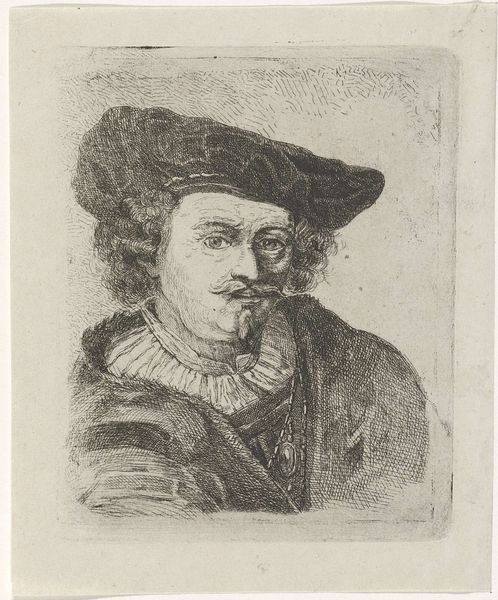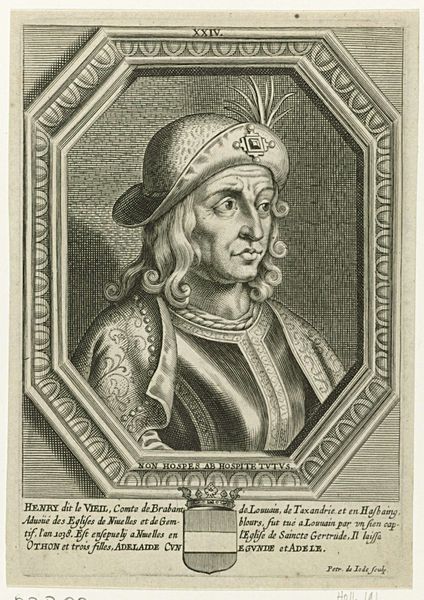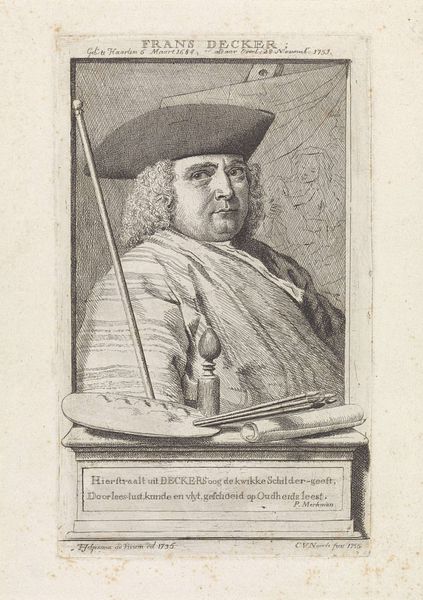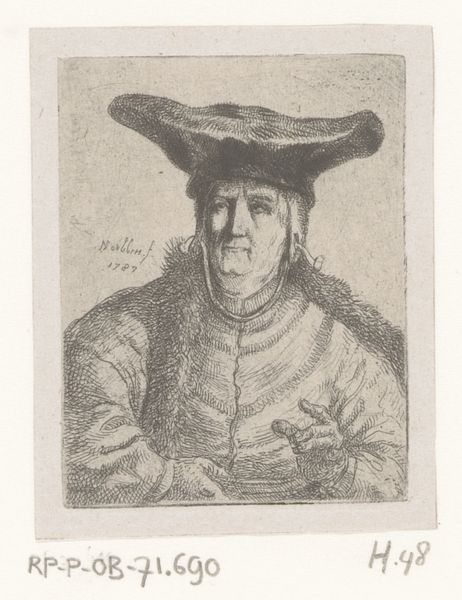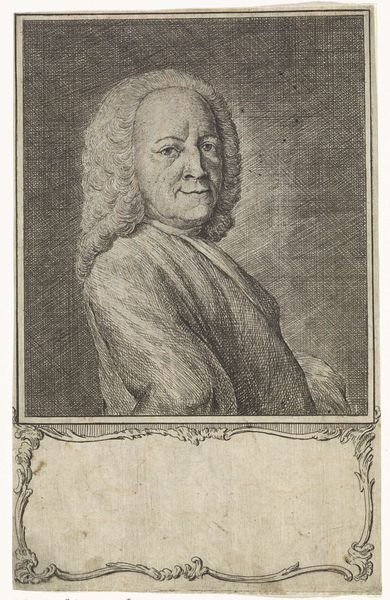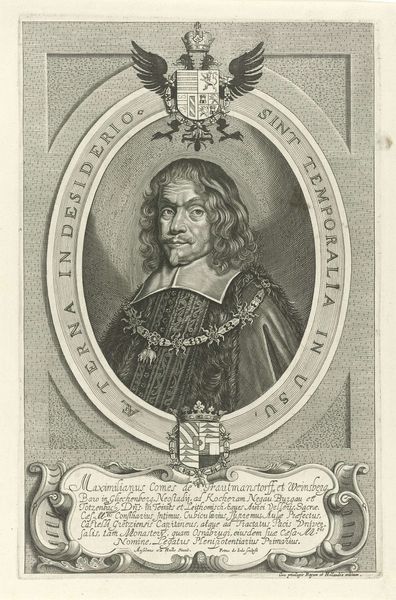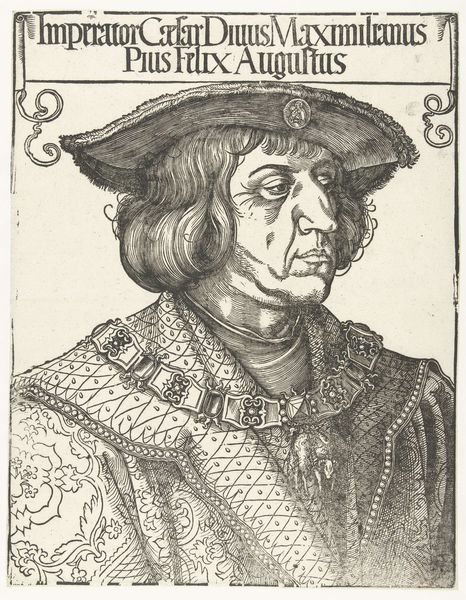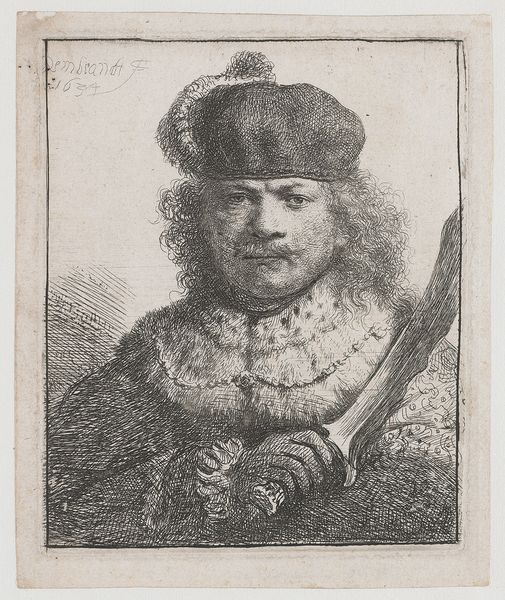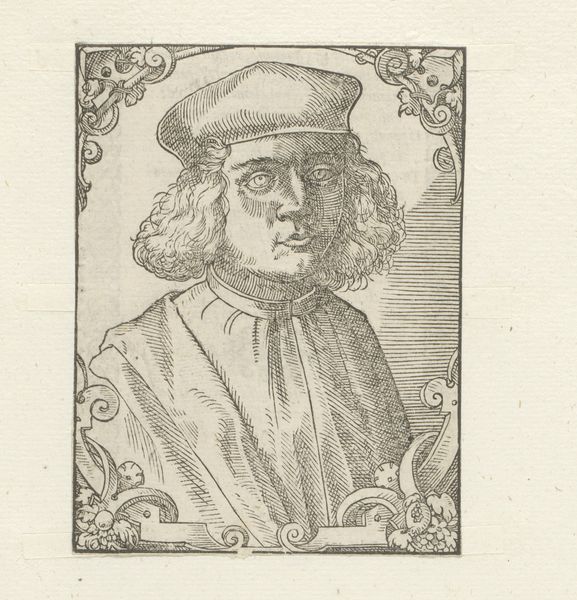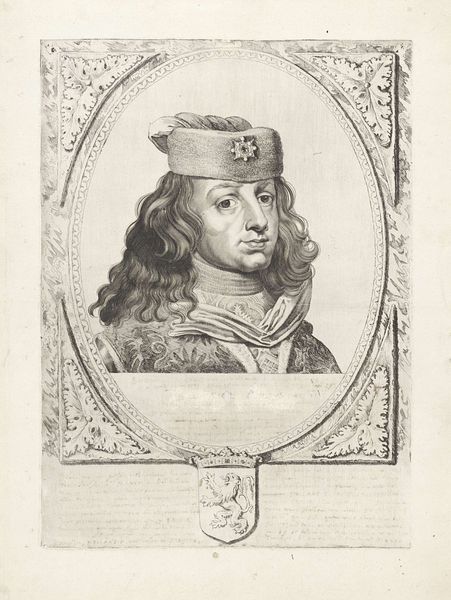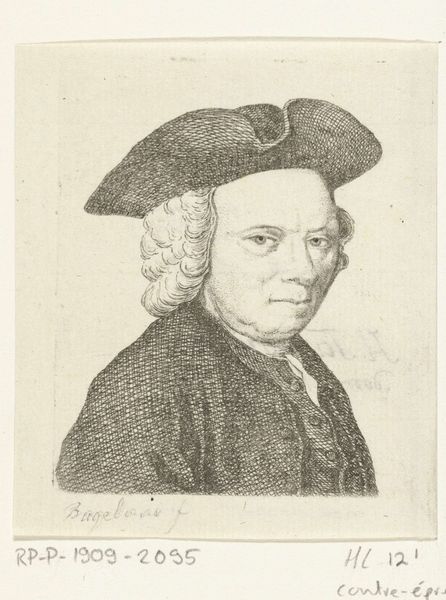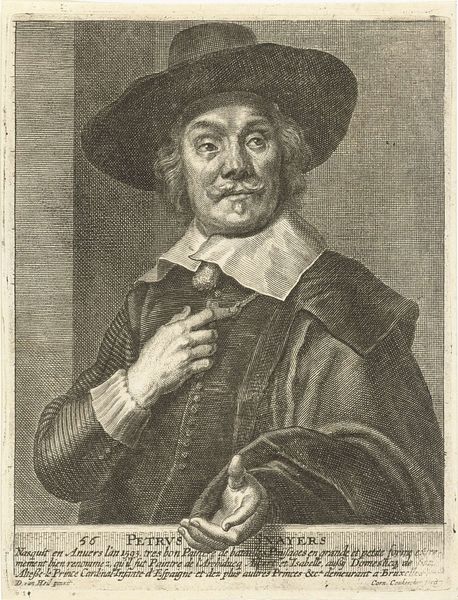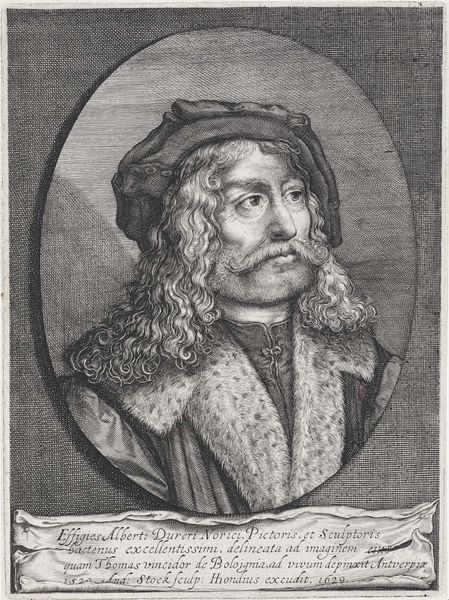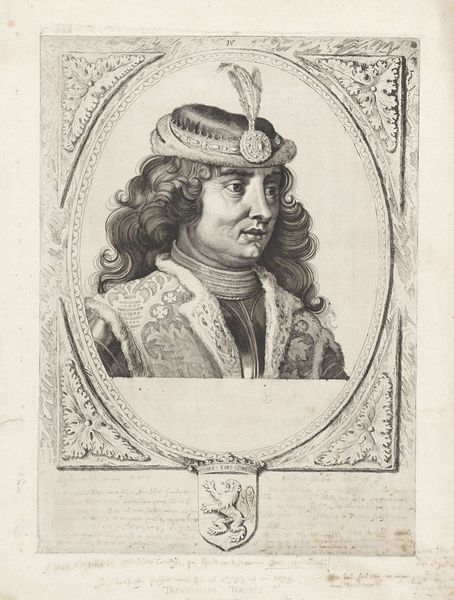
print, etching, engraving
#
portrait
#
baroque
# print
#
etching
#
engraving
Dimensions: height 134 mm, width 71 mm
Copyright: Rijks Museum: Open Domain
Editor: Here we have Cornelis van den Berg's self-portrait from 1759, an etching and engraving now held at the Rijksmuseum. There's a certain directness to his gaze that's quite compelling, though the monochrome palette and the fine lines give it a somewhat restrained feel. What do you make of it? Curator: Indeed. Focusing purely on its formal qualities, one immediately notices the expert handling of line. The texture, especially in the hat and hair, is remarkable given the limitations of etching and engraving. Note the strategic use of hatching and cross-hatching to create volume and shadow. It isn't merely representational, but expressive. The slightly asymmetrical composition, where the figure is not perfectly centered, generates a visual tension. Do you see how that imbalance contributes to the overall mood? Editor: I do. It’s subtle, but it stops it from feeling too static. Is that tension something Baroque artists often explored? Curator: Quite so. It challenges a classical sense of order. Though labeled portraiture, it becomes more a study in technique and pictorial space. Think about the negative space surrounding his figure, how the lines defining it interplay with those defining the form itself. It all contributes to its power. It's more than just an image of a man; it’s an exploration of visual language. Editor: I hadn't considered it that way, focusing more on the subject. Analyzing it from the perspective of formal construction is very illuminating. Thanks! Curator: A useful reminder to find the image and form together as a structure that communicates something important.
Comments
No comments
Be the first to comment and join the conversation on the ultimate creative platform.
